With Dr Carla van Laar
Feature image credit Carla van Laar
In this article I share a personal story about how what we see can change, and then I invite you to reflect on how you have changed since you started this journey of creative self care, and make a painting yourself and observe it from different perspectives, noticing the changes that occur for you in your seeing.
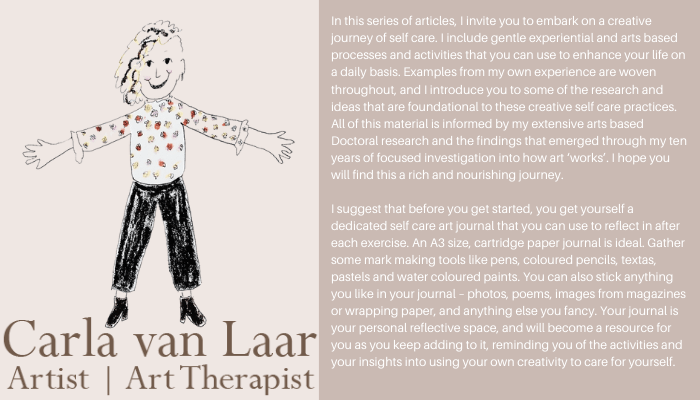
…
Seeing Differently – Noticing Change
During my Doctoral research, I investigated how what we see in artworks can change over time, and even from one moment to the next. Here, I share an excerpt from my book “Seeing Her Stories” to illuminate this theme.
“This extract is from my journal and describes an interaction I had with my son Henry who was twelve at the time. Henry and I were relaxed after eating dinner and found ourselves contemplating together with the image. In this story I am an intrigued mother, engaged in my art making process yet fascinated about what my child sees, and we share this moment together.
Years later, I read this scene back to Henry when he was nineteen. I asked him where he felt this would fit best, as an example of relationship, connection or change. He listened, pondered, and told me, “Change”. For him, the most significant part of seeing this artwork was enjoying noticing how what we see can change.
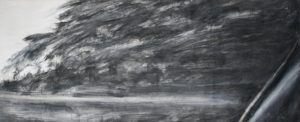
Figure 7.18 “Out the side window”. Carla van Laar, 2008.
Henry and I are lying on the couch in our apartment living room that doubles as my studio. I have my work in progress taped to the wall. It is another painting about the drive to Coronet Bay, this time looking out the side window. The trees beside the road are blurred by our motion along the road. I’ve been fascinated by wanting to observe the sense of movement. The shapes are abstract, the marks gestural.
The streetlights are casting shadows through the venetian blinds on the windows. The shadows fall on the painting, creating more curious shapes. We are having fun looking at it and seeing what we can see in the marks and shadows. Henry tells me what he can see:
“There is a buck-toothed, two eyed monster, it is winking! Can you see it?”
“No”, I say, “Where is it?”
“Turn your head sideways.” He replies.
I obligingly tilt my head and exclaim, “Now I can see a crocodile!”
He angles his head sideways too and is delighted! “Yes, a crocodile! It looks like it is crossed with a mini car!”
“And look”, I say, “There is a rooster too! But where is the buck toothed, two eyed monster?!”
Henry says “I look in the gaps between what you’ve done. Can you see the dog?”
“Oh yes! A dog!”
“The dog is cool”, says Henry.
“I can see an angel now”, I add.
“And a bear too”, adds Henry. “Let’s change the blind to get some new shadows”, he suggests, and jumps up to adjust the blinds.
He comes back to the couch and we lie there for a while before he says, “Mum”.
“Yes Henry”.
“I can see a toucan! Can you see it?”
“I can”
We lie there gazing at the toucan. For a while and then go to bed.
In the morning we have breakfast and see the painting again.
Henry says, “This morning it looks so different to when it had shadows and things all over it. It’s changed. The only thing I can see this morning is the crocodile”.
Henry’s way of seeing the image is quite different from my usual way. When I am painting the image I would ensure that there is plenty of light, whereas relaxing with Henry we allow the light to change and shift, creating shadows that alter what we can see in the image.
He also points out that instead of looking at the marks that have been made, he looks at the shapes in between the lines, and he invites me to do the same, to see the image differently. This changes how I see the image too.”
(van Laar 2020)
…
The Process
I would like to invite you to look back over all the art works and photos of artworks that you have made so far during your journey of creative self care.
This is a good time to reflect on where you have been in the journey, where you are now, and where you might be towards the end.
As you look back over the artworks you have already made, I would like you to notice what you see now.
Journal questions
Do you see anything differently to how you did when you first made these works?
What do you see?
What has changed in how you see?
What does this tell you about how you yourself may have changed?
Art making
This exercise is an adaptation of famous Phenomenological Art Therapist, Mala Betensky’s classic art therapy process, “What do you see?” (Betensky 1995).
Now, I would like to invite you to grab a nice big piece of paper, or a double page in your art journal, and some paint. Acrylic paint would be ideal, or watercolours if you don’t have acrylics.
Tune in to the colours of the paints. Feel what you are drawn to today, which colours would you like to work with?
Go with your instinct, try not to think too hard. Remind yourself there is no right or wrong, this is simply and experiment and a chance to play.
When you are ready, start making marks on the page with your paint. You can pour it, use a brush, dab it on with a rag, or move it around with your fingers, however you like to make marks today, it is entirely up to you.
Keep going for as long as you like, moving the paint around and making marks.
When you come to a natural close, step away from your page, your painting.
If you can, tape it up on a wall so that you can see it vertically. Step back and ask yourself “What do I see?”
Write everything that you can see in your journal.
If you can’t tape it to the wall, put it down on the ground and stand up, looking down at it from a distance. Ask yourself “What do I see?”, and write your answers in your journal.
Now, whether your painting is on the wall or on the ground, turn it around 90 degrees, and look at it from this different angle. Ask yourself again “What do I see?”, and write your answers in your journal.
When you are done, repeat this step, turning your artwork around another 9o degrees, noticing what you see and journaling your answers.
Complete this step one more time until you have looked at your painting from four different perspectives.
Reflective Journaling
What changed for you as you looked at your artwork from different angles?
What stood out for you in this experience of seeing differently?
What new possibilities might be opening up for you through seeing differently?
References
Betensky, M. G. (1995). What do you see?: Phenomenology of therapeutic art expression. Readers Digest.
van Laar, C. Seeing Her Stories. Carlavanlaar.com, Brunswick, Australia.
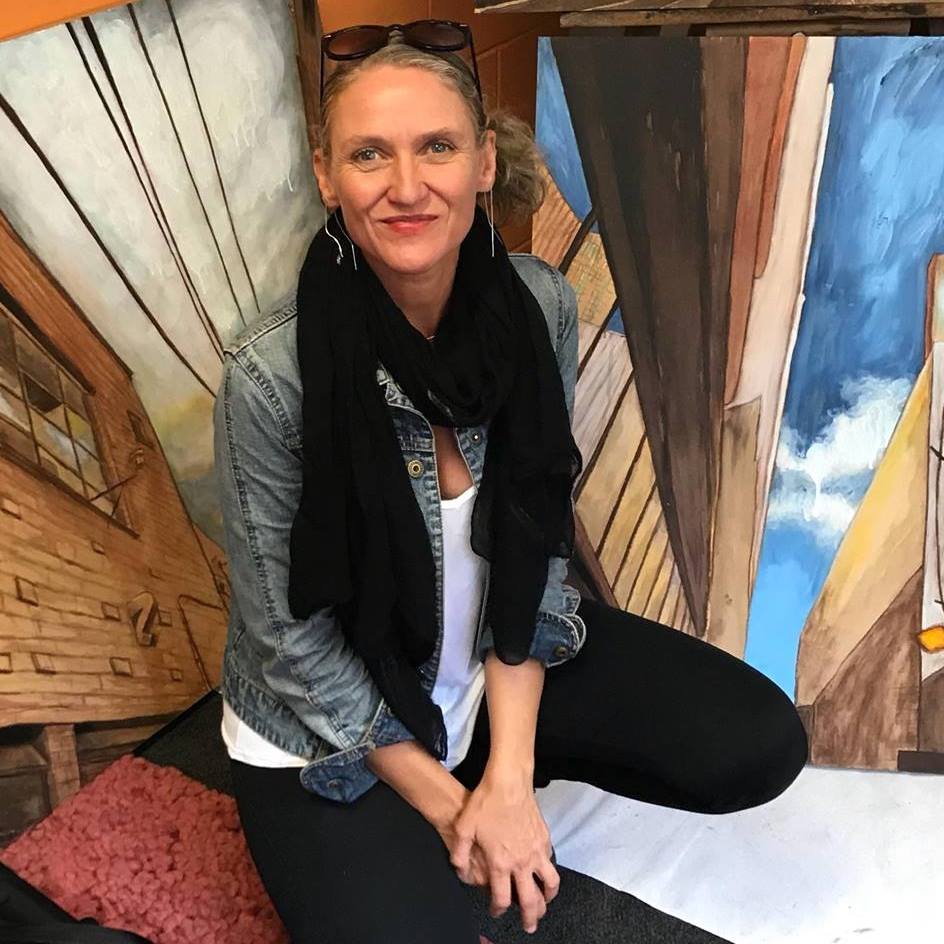
Dr Carla van Laar
Artist | Art Therapist
Master of Creative Arts Therapy
Doctor of Therapeutic Arts Practice
PACFA Clinical Registrant 27769 and Accredited Supervisor
Carla van Laar is a painter and therapeutic arts practitioner from Australia. Born in Brisbane, Carla is first generation Australian on her Dutch grandparents side, and 7th generation through her maternal bloodline who were mostly English and came to Australia in the early colonisation of the 1800s. Carla currently lives and works in Victoria, residing between Wurrundjeri country in Melbourne, and Boon Wurrung country in Inverloch, paying deep respects to the First Peoples of the Kulin Nations whose land was never ceded and will always be Aboriginal land. Identifying as a cisgender woman, Carla is passionately disinterested in socially constructed identities that disempower anyone. Carla has over 25 years’ experience working with people and the arts for health and well-being in community organisations, justice, health and education contexts.
Carla’s first book “Bereaved Mother’s Heart” was published in 2007 and broke social taboos about maternal grief. From 2008-18 she established and ran an independent art therapy studio and gallery in Melbourne. Her Doctoral research “Seeing Her Stories” continues the mission to make women’s stories visible, through art.
Carla has lectured and supervised Art Therapy students at RMIT, MIECAT and currently the IKON Institute. She is a practicing artist and in 2018 received an Artist Fellowship at RMIT’s creative research lab, “Creative Agency”. She insists on being part of a creative revolution in which art re-embodies lived experience, brings us to our senses, makes us aware of the interconnectedness of all life and is an agent of social change.
Carla’s new book “Seeing her stories” presents her research into making unseen stories visible through art, and is available to read for free online here or purchase a hard copy of the full colour hard cover coffee table book here.
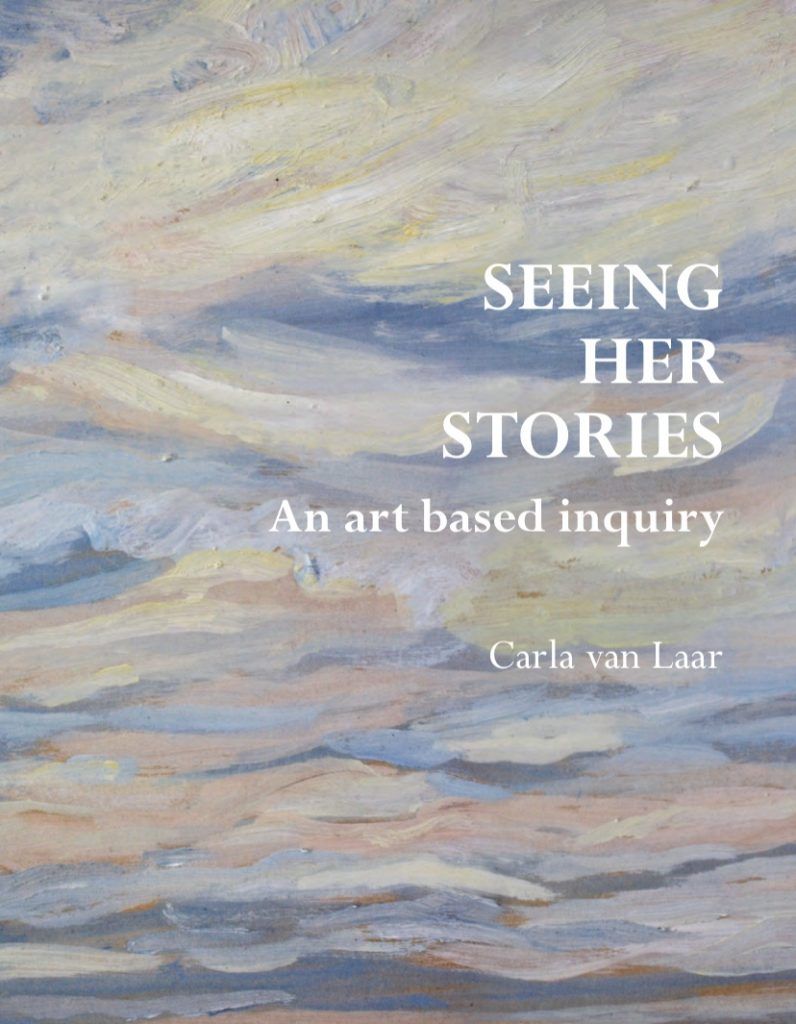

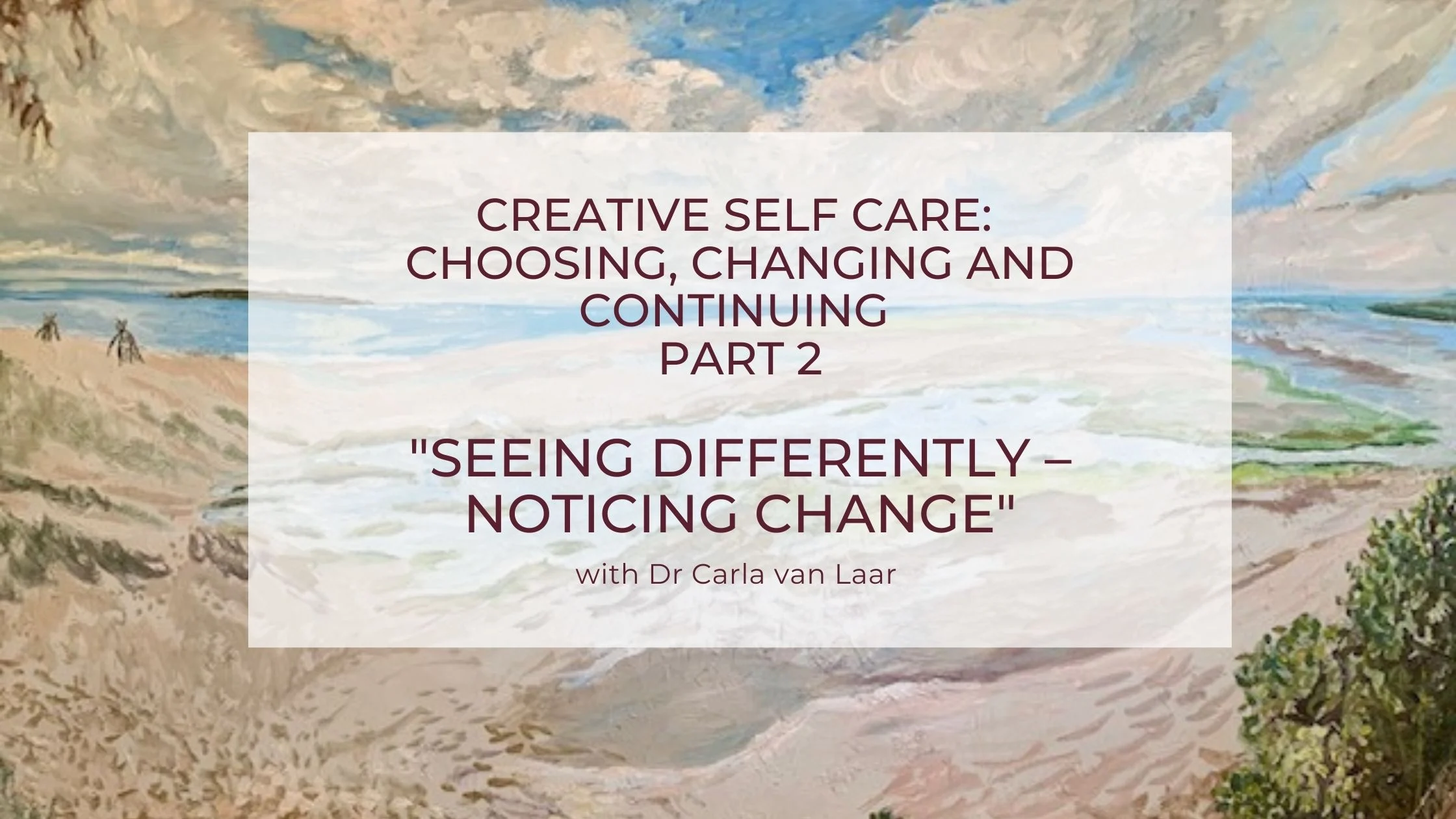
Leave a Reply